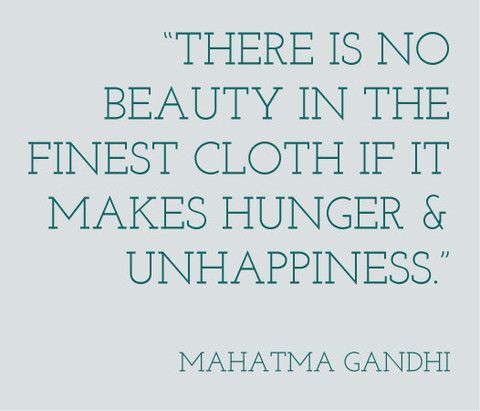From Guest Blogger Diana Smith: The Importance of Sustainable Fashion

What is sustainable fashion?
Sustainable fashion is not just another fashion trend – it is a philosophy that allows the society to become and act more consciously towards the environment as well as affect the impact that fast fashion has on the planet and workers. Sustainable fashion i.e. eco fashion presents a fight against the fast fashion industry which drains the resources and the work force. Not only do sustainable fashion brands use materials for their clothes that are not as damaging to the environment (there’s less damage done in terms of production, resources and transport) but they also spread the message of anti-consumerism awareness so that people can (re)gain the mindset of buying only what they truly need.
Natural fabrics
In general, it’s important that consumers know what kinds of fabrics are worth looking into when sustainable fashion is concerned. Essentially, natural materials are always a great choice. These are found in nature and renewable. Moreover, companies that deal with sustainable fashion go the extra mile to make sure that the processing, production and delivery are as eco-friendly as possible. With that being said, sustainable bamboo clothing as well as hemp, wool, silk and organic cotton are all great sustainable alternatives to materials that result in bigger carbon footprint and resource abuse such as synthetic materials, man-made fabrics and cotton that’s not organically produced.
How does fashion impact the environment?
Unfortunately, not many people realize just how much of a negative impact fast fashion has on the environment today. Essentially, it affects waste, water, toxic chemicals and energy. For instance, in order to get just one shirt, 400-600 gallons of water are necessary for its production. The amount of water is even more concerning when it comes to one pair of jeans, which usually need around 1800 gallons of water. There are also more than 1600 toxic chemicals used in the dyeing process, with only 1% of these chemicals actually being approved by the EPA. Not to mention that garments usually travel for thousands of kilometers in order to reach the consumers. What’s more, this kind of industry doesn’t act alone. It’s supported by everyone who buys clothes. There’s no room for blame when every single one of us belongs to the consumer society, but the disturbing truth is that we generally tend to buy 400 percent more clothes than people did 20 years ago. And, most of those clothes get thrown away after being worn seven times on average. These days, clothes are so cheap and of poor quality that it just seems practical to throw it away as soon as possible.
So, what can you do to do your part to save the environment by including sustainable fashion into your lifestyle? For starters, try to stay away from FOMO and pop culture that dictates fast fashion. Having a timeless wardrobe is always a great solution. Moreover, look for certified brands in your country that carry natural/organic clothing, always check the labels on the clothes so that you can see the materials used in the making and stay away from “crease-proof” and flame retardant claims.

It’s terrible that people care more about their clothes and nice cars, rather than people in third world countries and the environment! If humans weren’t so greedy, we could fix so many issues like world hunger and global warming! People need to see what they are doing before they will ever think of changing.